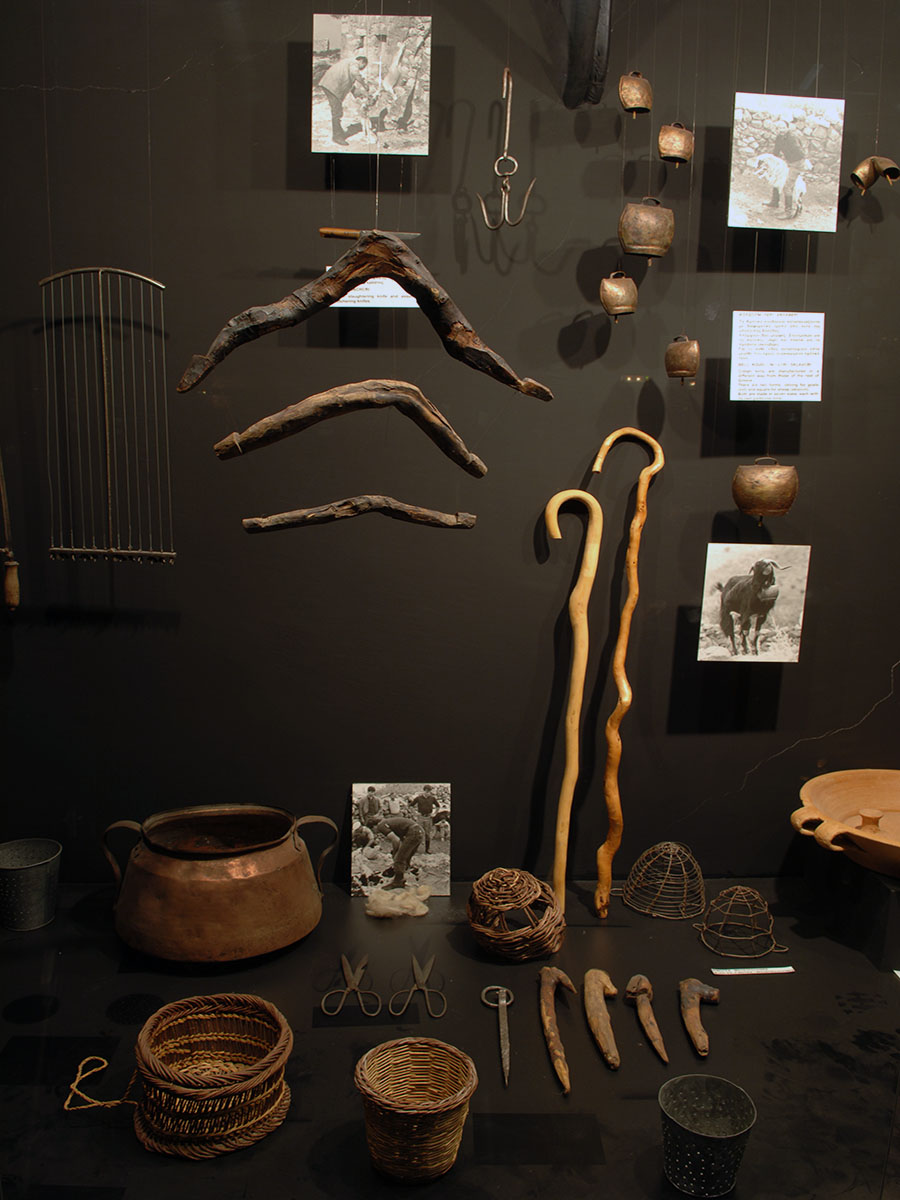Exhibition
Presentation Of Exhibits By Section
Animal Husbandry
Species
Rural Cretans farm the main species of domesticated animal found in the Mediterranean basin. Sheep are by far the best, due to their many advantages:
Goats do not require particular care but produce fewer products than sheep, apart from meat.
Mediterranean bovines produce little milk and were farmed in prehistoric times for their abundant meat. Their hides were used for shields and shoes, while their horns were turned into hilts for weapons and tools.
During the historic times studied here, Cretans used pairs of cows for ploughing and other agricultural work. Their hides were used to make the famous Cretan boots or stivania.
The few home-reared animals (goats, pigs, rabbits, chickens, and pigeons) were intended exclusively for the use of the family.
Each family needed at least one pack animal, because for 1,000 years these were the only means of transport. The most widely used animal was the donkey, which was docile and cheap to feed. Better-off families owned a mule or even a horse.
Shepherding And Shearing Implements
The shepherd was always equipped with tough boots, a crook, a bag or vouryia for dry food, a small leather satchel with tools for repairing his boots and a gourd of wine or raki. In winter he wore a long woolen coat with a hood, the kapa.
Cretan sheep-bells are different to those found in mainland Greece. The body is made of a sheet of iron covered with copper and bronze. The shape and sound vary depending on whether the bell is for sheep or goats. There are seven sizes, from young animals to large billy-goats and rams. The bells are made in pairs and the bell-maker makes sure there is a one-sixteenth difference in tone between them, so the shepherd knows which animal is where at night or at a distance. The bells are attached with a special leather collar, different to the wooden one used in the rest of Greece.
A large pair of shears with a protrusion on the larger blade is used for shearing.

Cheese-Making Implements
These are few and simple because shepherds make cheese for two to three months (April-June) high up in the mountains where the flocks move in the summer, using improvised dairies.
The basic implements are the copper pots or kazania for milking and cheese-making, and cheese-cutters ( tyrokoftes ) for cutting the set cheese in the kazani.
Only two types of cheese-mould are used in Crete, baskets which last a long time.
The toupi is a type of basket unique to Crete, made by a large family in a village of western-central Crete, who retain the secret of its construction and supply baskets to all the island’s cheese-makers. Various sources show that this form was found in antiquity but for a different use. This is the mould for first-class cheese, which is somewhat similar to gruyère.
The second type of cheese-mould is a finely woven little basket without a handle called a madaria . This is used for soft cheeses made from the curds boiled for a second time, with a little fresh milk added. This soft cheese is called myzithra and is eaten on the spot, or salted and aged for 3-4 months, in which case it lasts a long time and is called anthotyros .
